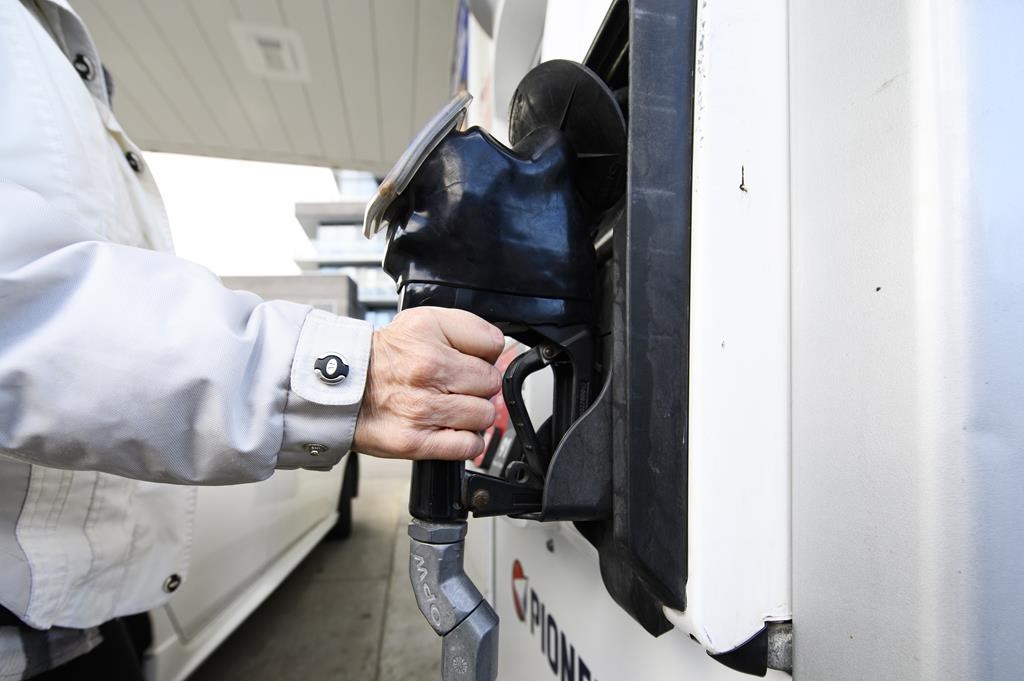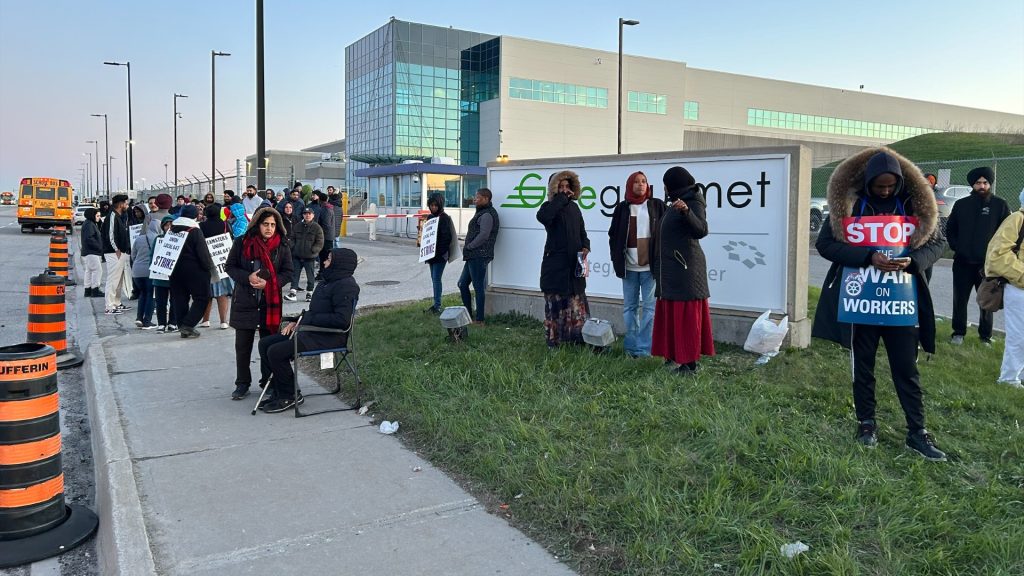Toews won’t speed up arming of border guards after shooting at B.C. crossing
Posted October 17, 2012 11:06 pm.
This article is more than 5 years old.
SURREY, B.C. – Public Safety Minister Vic Toews says he’s not interested in speeding up the arming of border guards, despite the shooting this week that sent a guard at a B.C. crossing to hospital with a gunshot wound.
The Canada Border Services Agency said in 2006 that it planned to arm its 4,800 guards within 10 years, and so far, just under half have been trained.
But Toews says he’s concerned that any effort to speed up that training might compromise safety.
“One thousand officers a year, given the expansion of the frontline officers that we’ve done is remarkable good progress,” Toews said Wednesday in Ottawa.
“I think it’s prudent. I’d be very reluctant to tell the agency to speed that up if it meant compromising the security training.”
Canadian border guard Lori Bowcock was shot Tuesday in her customs booth at the Douglas border crossing, also known as Peace Arch, south of Vancouver. She remained in hospital Wednesday in stable condition.
Police have said a man driving a white van with Washington state licence plates shot her and then killed himself.
The suspect was identified Wednesday afternoon by the B.C. Coroners Service as 32-year-old Andrew Michael Crews. The man had previously lived in Bremerton, Wash., and had reportedly moved to Seattle recently.
The suspect’s stepfather said Crews texted his mother hours earlier to say he loved her and was sorry.
Danny Lupinek of Henderson, Nev., said his stepson didn’t indicate what he meant by that text and family members were unable to reach him later.
Police have not publicly speculated on what motivated the shooting.
“The current evidence clearly indicates that prior to taking his own life, Mr. Crews deliberately fired at the victim,” RCMP Supt. Kevin Hackett, who is in charge of the region’s homicide unit, said in a statement.
“There is no evidence, however, to suggest the victim was specifically targeted.”
Bowcock had worked as a civilian dispatcher with the Ontario Provincial Police until this past spring. She started work at the B.C. border crossing three months ago.
Roslyn MacVicar, the boarder agency’s regional director for the Pacific region, said in a statement that Bowcock is expected to make a full recovery. The guard’s mother and brothers are by her side.
MacVicar said Bowcock completed her training with the agency in July and was deployed to the region. She hadn’t yet completed the training that would allow her to carry a firearm.
“I know everyone within our organization is thinking about Lori and wishing her well,” MacVicar said in the statement.
“This incident is a profound reminder of the risks that border services officers assume every day in their role to protect the safety and security of all Canadians.”
MacVicar said the border crossing was expected to re-open Wednesday afternoon to U.S.-bound traffic and Thursday morning for those heading north into Canada.
Jean-Pierre Fortin, national president of the Customs and Immigration Union, said the thoughts of all border guards are with Bowcock.
“In the days to come, we will closely examine the circumstances of what took place. Our priority now is the full recovery of our injured member and the continuing welfare and safety of all of our members.”
Sgt. Peter Leon said the OPP was informed of the incident and it has told members who knew and worked with the woman while she was in Ontario.
“Our concern is obviously for her health and well-being. Certainly as an organization we wish her all the very best with respect to a recovery from this tragic incident and our thoughts are with her and her family as they deal with this ordeal,” he said in an interview.
Leon did not know Bowcock’s age. But he said she had volunteered with the Middlesex OPP detachment and was trained to assist with various community events like parades and the fall fair.
David Jacobson, the U.S. ambassador to Canada, issued a statement of support for the officer.
“This tragic incident reminds us of the work our border service officers do — often under dangerous conditions — to ensure the security and the economic success of North America. They deserve our respect and our appreciation.”
More than 2,000 of the 4,800 border guards in Canada have been trained to carry a firearm.
Training is incremental in every region of Canada with the goal of having some armed guards at every border point.
“It’s always important to move as quickly as possible but I want to ensure that officers who do carry firearms are appropriately trained, not simply in terms of the firearm itself, but the steps before lethal force is in fact used,” Toews said.
A draft internal report on use-of-force incidents involving border guards was obtained by The Canadian Press this past summer under the Access to Information Act.
It found fewer border guards drew their guns, batons and pepper spray last year in an abrupt reversal of a previous trend toward greater use of force at Canadian border points.
The Canada Border Services Agency logs every incident in which their officers draw or discharge their duty sidearms, and pull out or use their truncheons and pepper spray.
There were 147 such incidents at border stations in 2011-2012, a significant drop from 184 in the previous year
But it also found the most incidents were in British Columbia, with 44 in 2010-2011 and 42 in 2011-2012.
In the first year, there were four incidents where a firearm was drawn, two of pepper spray and one of a baton being used.
But although there were two fewer incidents in 2011-2012, 10 of them involved a firearm, four pepper spray and one use of a baton.
The Peace Arch border point is the third busiest crossing between Canada and the United States.
An average of 3,500 cars pass through the crossing on a slow day, and during peak periods about 4,800 vehicles will move through the border.
During those peak periods, border delays can reach four hours on either side of the border.
— With files from The Associated Press










